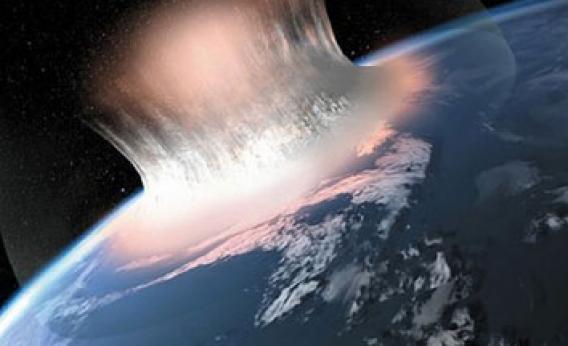Create a free profile to get unlimited access to exclusive videos, sweepstakes, and more!
No, an Asteroid Is Not Going to Wipe Out All Life on Earth in 2041

On Monday, May 26, 2014, CNN iReport posted an article (note: article is now taken down) with the somewhat attention-grabbing headline of “Giant Asteroid Possibly on Collision Course With Earth.”
Needless to say, I was immediately suspicious. I think I would’ve heard about this rock from any of a large number of friends of mine who look for such threats for a living. Then I read the article, and knew for sure it was just so much fertilizer.
The article was very short on things you might need to get actual info—like, y’know, the asteroid’s name. The fact that the writer used an Internet handle (“Marcus575”) instead of an actual name was also a tip off that something wasn’t quite right.
Then, the keywords for the article used were “beiber [sic], war, gaming, stocks, science, cyrus, space, obama, earth, states,” which may also have been a bit of a tell as to its accuracy, or lack thereof.
The nail in the coffin would be the date listed for the impact: “March 35, 2041”.
Yes, sic.
The page has been taken down (with an explanation but no apology), but here’s the text in its entirety:
If astronomers are right, all life on this planet could be extinguished in less than 30 years from now. Scientists at NASA's Jet Propulsion Laboratory have detected a large object the size of Manhattan possibly on a collision course with Earth. Using their Near-Earth Object Wide-field Infrared Survey Explorer ( NEOWISE), the 10-mile wide object was found approximately 51 million miles from Earth. Scientists believe that during a close encounter with Mars, the asteroid was nudged slightly off its usual orbit and may currently be on a high speed collision course with our fragile planet.
The asteroid is calculated to have a potentially lethal encounter with the Earth on March 35, 2041. Astronomers have placed the odds of an impact at 1 in 2.04, which is by far the most unprecedented risk ever faced to humanity, let alone from asteroids. Such an impact could potentially end civilization as we know it.
More information will be posted here as the story develops...
I have a screenshot I took of it, too, just for posterity.
I sent a note to my friend Amy Mainzer, who happens to be the Principal Investigator on the NEOWISE mission, and she was, um, less than happy about the article. She pointed out that the largest asteroid NEOWISE has found is only 3 kilometers (2 or so miles) in diameter, a far cry from the 16 kilometers claimed in the article for this mysterious unnamed rock.
Also, if an asteroid were found with a whopping 50 percent impact probability, every astronomer on the planet would be screaming about it from their rooftops. In reality, it would be very difficult to nail down an orbit that well 10 years out, especially if the asteroid were just discovered. There’s generally just too much uncertainty in the orbit’s exact shape to know what it’ll be doing a decade from now.
It looks to me that the article was a hoax from the start. So how did it get on CNN?
Well, it did and it didn’t. It was on CNN’s iReport site, where anyone can sign up to post a “news article”; a sort of citizen journalism site provided by CNN itself. As the iReport "About" page states, “The stories here are not edited fact-checked or screened before they post.”
In my opinion, it’s pretty obvious that allowing unvetted reports posting under the CNN imprimatur is a terrible idea. It was only a matter of time before something like this would happen. In the screenshot, at the upper left corner of the giant graphic depicting a life-wiping-out impact on the Earth, there are the words, “NOT VETTED BY CNN” in small font, so I’m sure they feel relieved of responsibility.
Seriously, it’s very easy to mistake the iReport pages for the actual CNN page. They really need a bigger banner delineating this from the official site. Or maybe one that says “THIS STORY MAY POSSIBLY BE FACT-FREE”.
By the way, on the screenshot you can see that over a quarter million people saw that article! That’s a huge number of eyeballs. At least CNN eventually took it down, but it was more than a little late.
CNN has taken a credibility beating lately. Its Boston Marathon bombing coverage, for example, and the nonstop and in some cases forehead-slappingly ridiculous coverage of the Malaysian flight going down were not high points for the network. This really doesn’t help. In my opinion this downhill slide started when it closed up its science coverage years ago and let go of Miles O’Brien.
I make mistakes; we all do. But to have something like this—really, an obviously purposeful hoax—on a website attached to an internationally watched news source is a bit more difficult to forgive.
As usual, if there’s asteroid news, your best bet is to try right here (or follow me on Twitter), on Universe Today, and of course NASA. If it's big news like this and you don't see it there, take it with a 10 mile wide chunk of salt.


























